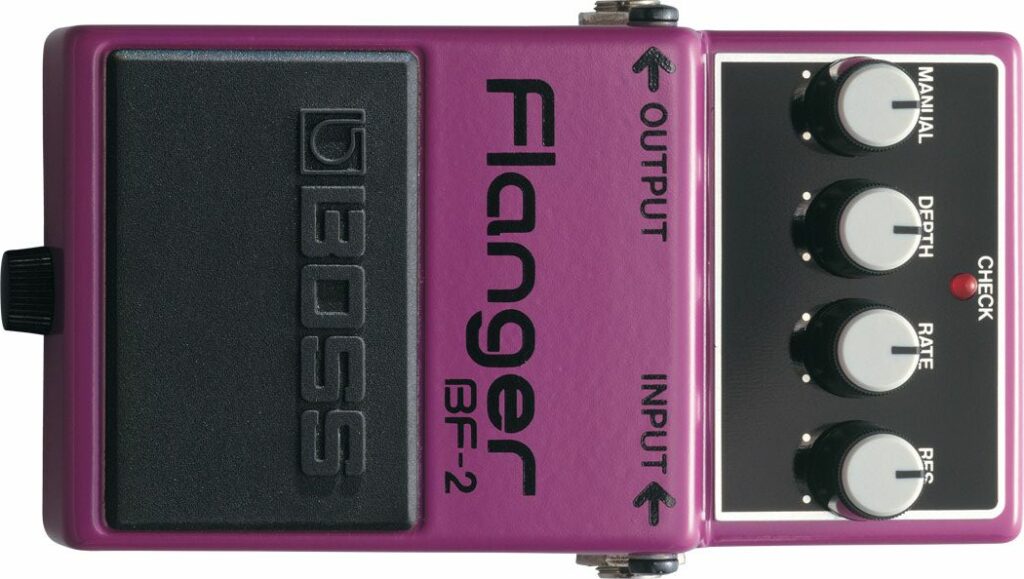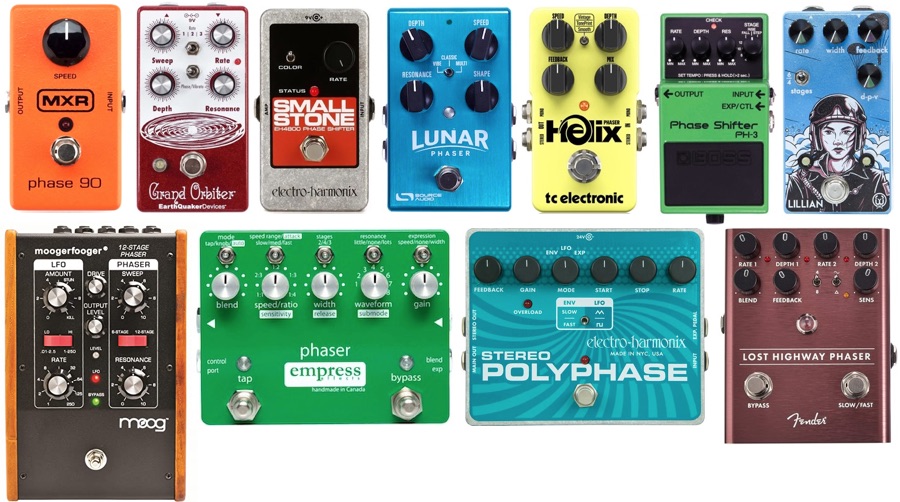Chorus, flanger and phaser are some of the most iconic audio effects in music. They deliver a unique and instantly recognizable flavor to your tracks, adding intriguing motion, texture, and sonic interest. They’re yet another excellent way to get creative in the studio. Whilst these processors are very well-known, they often get mixed up with one another.
It’s understandable that people get confused because they’re all phase modulation effects and because, to some extent, they sound very similar. There is, however, one key difference: delay time. Chorus uses a longer delay time than a flanger, whilst a phaser doesn’t actually use one at all. Instead, phasing works by running the signal through an all-pass filter. Read on to explore Chorus, Flanger and Phaser effects in more detail, whilst also examining their other major differences, how they work, and how to use them.
Chorus Effect
The chorus effect is potentially the most well-known of the three, renowned for creating a shimmering, full, and wide sound. It’s a particularly effective way to add depth to your mix. The effect is made by combining various individual sounds with slight pitch and timing differences from one another. The result is that you perceive it as one rich sound. It’s actually very similar to a doubling effect. You can hear a similar effect when listening to a string ensemble or choir when multiple singers or musicians are playing the same note but at slightly different times and pitches.
Whether in hardware, software, or acoustic form, this effect works by mixing an audio signal with one or more copies of itself, with varying pitch differences. It’s then the delay time between the copy and the original signal that causes a constantly changing phase shift. On the whole, a slower delay time will create a more subtle chorus effect while a quicker rate will generate more phase-shifting and perceived modulations of the original signal.

Instead of using a pitch circuit to modulate pitch, such as with a vibrato effect, chorusing generates changes in pitch and intonation by modulating the waveform delay time with a low-frequency oscillator (LFO). It’s therefore similar to a flanger in this manner, except it has longer delays and little feedback. In fact, chorus pedals typically have delays of 20ms or more. Some more dissimilarities with flangers and phasers are that it has minimal constructive and destructive interference, and that feedback is only occasionally used.
Chorusing is typically helpful for adding texture, subtle width, doubling vocals, and sitting things further back in your mix. For instance, they are particularly great for adding warmth and width to keyboards, guitars, and basses. That said, don’t be afraid to get creative and use it any way you please, such as using it to add character to your drums. Just be careful of the rate and depth of modulation of the chorus as this effect can push sounds into the background.
Flanger Effect
Flanging creates a sweeping and metallic effect that sounds like a jet engine flying overhead. It works by duplicating the signal and then adding a tiny bit of delay to one of the copies, similar to chorusing. However, a flanger pedal typically has shorter delay times of around 10ms and below. You can achieve Flanging’s signature sweeping sound by modulating the delay time with an LFO, which involves moving the notches and peaks up and down across the frequency spectrum periodically.
It’s relatively similar to the chorus effect but it is more pronounced and exaggerated. Flanger modulation is also typically more predictable and orderly than chorusing; the LFO is always a steady triangle or sine wave. Another point of differentiation is the fact that notches occur at intervals in harmonic series, unlike chorus and phasing.

Since the delay is shorter, the delayed copy in flanging does not experience the same pitch-shifting that choruses undergo. With choruses, the frequencies of the original and delayed copies are almost always different, thanks to the pitch-shifting. This, in turn, minimizes the impacts of constructive and destructive interference. In flanging, however, the delayed copy is very similar to the original, so a significant degree of interference can occur.
This flanging interference can result in comb filtering, creating a distinctive «comb-like» shape on the frequency spectrum. Whilst you can use it creatively, it’s important to know how to avoid comb filtering. It’s also worth adding that flanger effects use feedback loops, where part of the processed output is fed back into the system for even more modulation. This produces a resonance effect which further accentuates the effect of comb filtering, giving flanging its harsh and metallic tone. The phase of the fed-back signal is also occasionally inverted, which produces another variation of the flanger sound.
Phaser Effect
Phaser effects are processors which create a swooshing, swirling, and sweeping effect, which is typically softer than a flanger. It works by duplicating a unique signal and then feeding it through a circuit, called an all-pass filter. Similar to chorus and flangers, it gets its sweeping effect from modulating an LFO. However, as discussed, it differs from the other two as it does not use delays.
Now let’s get into how exactly it works. The phasing process involves splitting a signal into two paths. One path is sent through an all-pass filter, which maintains the amplitude of the original signal and changes the phase. The amount of change in phase is ultimately dependent on the frequency. When these signals from the two paths are then combined, the out-of-phase frequencies will cancel each other out, creating the phaser’s signature notches. Flangers, on the other hand, use a delay line which creates an unlimited series of equally spaced notches and peaks.

This effect is ultimately achieved by stringing various all-pass filters (also called stages) in sequence. This creates a series of non-harmonically associated notch filters. How many filters or stages you have impacts how many notches/peaks you have in the sound and how pronounced the effect is. Some analog phasers have 4,6,8 or 12 stages. Digital phasers, on the other hand, may offer up to 32 or more.
Finally, you can add a feedback loop to enhance the effect, similar to a flanger. That is, the output can be fed back into the input, creating a resonant effect by emphasizing frequencies between the notches. You can achieve the phaser effect either through hardware, such as phaser guitar pedals, or through software plugins. Some plugins are paid but you’ll be surprised how many free plugins are out there.
Summary: Chorus, Flanger and Phaser Effects
Whilst Chorus, Flanger and Phaser effects all incorporate phase shifting, they are not the same. Chorus combines phase shifting with pitch modulation, a flanger uses it to trigger harmonic-based comb filtering, and a phaser employs all-pass filters to phase shift without the usage of delays.
Hopefully, you will have learned in this article how they all differ in their capabilities and application. Whether in hardware or software form, we recommend getting out there and experimenting with each of them for yourself. Thanks for reading!
Sobre el autor

Joe Curtis
Marketing Digital y Redacción de ContenidosJoe Curtis es un apasionado del Marketing Digital del Reino Unido. Durante su tiempo en MasteringBOX ha creado contenidos increíbles sobre producción de audio y música.
Deja un comentario
Inicia sesión para comentar


